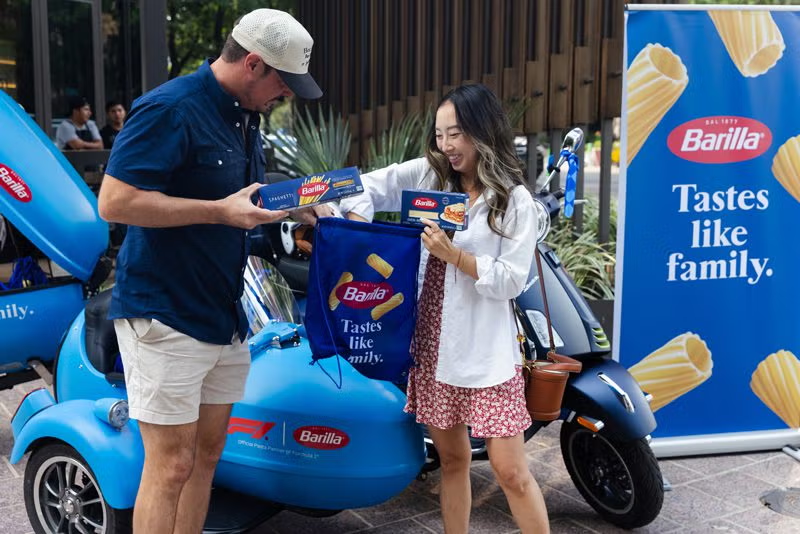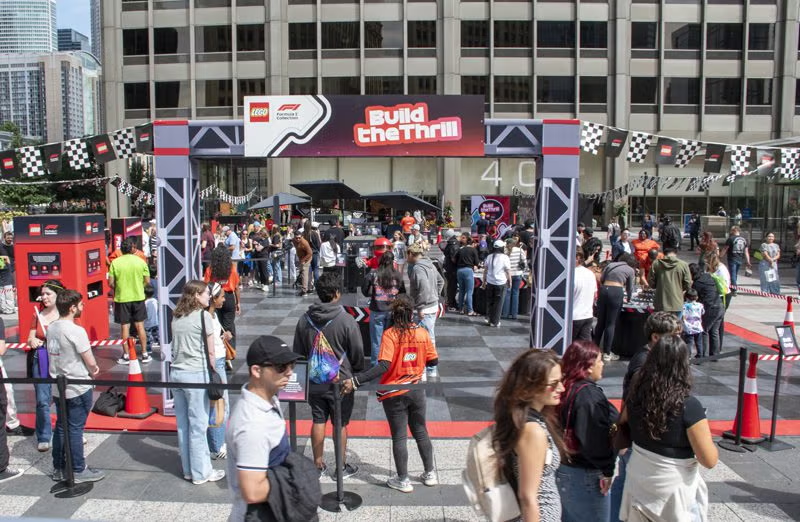The Circuit of the Americas (COTA) functioned as a live laboratory for experiential strategy. In October 2025, the U.S. Grand Prix condensed a citywide celebration of fandom where brands braided Texan motifs with global motorsport narratives. The weekend underscored Formula 1’s U.S. ascent—an audience that is skewing younger, diversifying, and rewarding off-track ingenuity that nudges on-track loyalty.
Demand was conspicuous, and operations followed suit. While 2025 total attendance was not immediately disclosed, Austin–Bergstrom registered a single-day departures record of 45,048 on the Monday after the race. Meanwhile, Formula 1 extended COTA’s tenure through 2034, securing a decade of continuity for scalable brand investment.
MSC Cruises, the title sponsor, exploited trackside prominence and hospitality layers to dovetail the race with its Gulf growth thesis, aligning Austin visibility with Galveston sailings. The activation matrix—branding, team integration, and VIP ingress—demonstrated how signage can be transmuted into commerce-proximate experiences.
Within the Fan Zone, American Express deployed one of the event’s most elaborate builds. The two-story Amex Fan Experience featured livery design studios that generated printed postcards and digital takeaways, a “driver intro” video booth, and a figurine-style photo station—mechanics engineered for data capture, UGC velocity, and loyalty reinforcement.
Utility-shaped behavior. Cardmembers accessed Amex Race Radios, a customization garage for U.S. Grand Prix bandanas, and a Platinum refresh enclave stocked with sunscreen, hydration packets, and cooling towels—functional comfort rendered as premium care. A satellite Amex Pit Stop near the Main Grandstand distributed seat cushions and popsicles to combat the Texas heat.
AT&T extended its canvas beyond COTA. As innovation partner to Oracle Red Bull Racing, the AT&T Garage at Distribution Hall combined pro-grade simulators, custom phone cases, and fast-charge stations, and live content moments including a “P1 with Matt & Tommy” session—then propagated into local retail with demos, giveaways, and a driver meet touchpoint during race week.
Barilla converted the city into a hospitality circuit. Branded Italian-style scooters delivered 5,513 free pasta kits—one per meter of the COTA track—across downtown from October 16 to 19. The push bridged street-level sampling with grocery conversion via a “Barilla Bodega” at an H-E-B in Pflugerville, complete with chef-led tastings and gift-with-purchase triggers.
Duracell staged retail theatrics. A Home Depot meet-and-greet guaranteed access for the first 100 battery purchasers, translating fandom directly at the register. A six-stop “Duracell Fan Prix” brought racing simulators, trophy moments, and a Texas-style belt buckle, while branded foam cowboy hats roamed the city as ambulatory billboards.
LEGO’s “Build the Thrill” formalized the family pathway. Eight zones focused on ages 6–12, including a Race Lab for mini-car builds, a Wind Tunnel to test aerodynamics, and a Thrill City Circuit where action cameras captured laps in real time—hands-on STEM reframed through an F1 lens. Driver photo IDs, pit-stop games, and a graffiti wall completed a share-ready loop.
Monster Energy, in tandem with Lando Norris, delivered a cross-category launch. A South Congress LN4 × Monster Energy pop-up celebrated a zero-sugar flavor linked to the McLaren driver, intertwining limited runs, merch drops, and live chain-stitch customization—amplified by roaming sampling vehicles and surprise location cues via social posts.
Red Bull went skyward. The rooftop of Vanta Athletics became a “Catcher Kart” track, inviting the public to chase a pro, vie for prizes, and sample an F1 simulator. GameSquare led production and branding, with barricades and Segway karts composing a contained, credible circuit above the streetscape.
Beauty intersected with spectacle at Clarins × V Magazine’s “Golden Hour.” A 300-guest gathering at Waller Creek Boathouse paired crimson-and-gold aesthetics with product showcases—Double Serum and Total Eye Lift—plus Western-leaning culinary notes and a celebrity-tinged roster designed for high-gloss distribution.
PATRÓN advanced a premium downtown hospitality sequence, using RSVP controls and culinary collaborators to modulate flow and heighten exclusivity. Pacsun, trackside, unveiled a Texas-inspired COTA capsule, converting race iconography into functional silhouettes and offering purchase-ready keepsakes in-venue.
Uber engineered one of the weekend’s signature off-track set pieces with “The One Party.” On a ranch outside the city, the brand staged a full rodeo environment—bulls, riders, an emcee, and headlining performances—linking mobility utility to high-octane entertainment and local food partners from barbecue to tacos.
Retail fused with culture at the official F1 Hub. Beyond team apparel, a Peanuts collaboration unveiled U.S. Grand Prix-specific designs, while a new LEGO F1 collection extended the family thread initiated in the Fan Zone—licensed IP and youth-forward merchandising encouraging multi-generational spend.
Field signals were consistent: queues formed early, sampling accelerated trial, and comfort amenities lowered friction. Barilla moved thousands of kits; Amex’s refresh features extended dwell; rooftop karting condensed extended engagement into a succinct, high-impact loop. Each build is mapped to throughput, content creation, or point-of-sale intent.
Three motifs dominated. Austin’s rodeo vernacular—hats, buckles, livestock cues—supplied an immediate local shorthand. Maker culture thrived: patch bars, chain-stitch artisans, and DIY mini-car builds restored agency to fans. “Light-lab” demos translated complex performance concepts—downforce, speed—into playful family encounters.
Media mechanics were precision-tuned. UGC capture mirrored broadcast tropes such as driver introductions, rooftop vantage points produced skyline imagery, and timed product or merch drops rewarded vigilant followers. Recognizable set pieces—Red Bull can podiums, LEGO driver licenses, foam cowboy hats—traveled well across feeds.
Performance hinged on three levers: utility, scarcity, and local texture. Cooling towels and radios solved practical needs. Limited-edition flavors, capsules, and RSVP lists created urgency. Western cues, Texas culinary partners, and a downtown-to-track grid grounded the experiences. The composite effect: outcomes that extended beyond spectacle.
The 2026 template is already visible: expand family-centric STEM precincts, hardwire retail-media bridges from Fan Zone to neighborhood nodes, and pursue distributed takeovers that ease congestion while amplifying impressions. Heat-mitigation architecture should be embedded from queue design to programming cadence.
Operational risks—temperature, crowd density, egress—are addressable through shade-rich queuing, appointment windows for peak demand, and data-informed shuttle and ride-hail incentives tied to activation heat maps. Brands that master the last mile will see longer dwell and stronger sentiment.
Compared with streetscapes like Miami and Las Vegas, Austin’s fixed circuit provides controllability, consistent attendance, and long-horizon certainty—now secured by contract. That reliability invites capital-intensive builds, rooftop circuits, and multi-level fan houses that can be iterated annually with confidence.
The conclusion is empirical: Austin has become the U.S. crucible for Formula 1 brand theater. From 5,513 pasta kits to a full-scale rodeo, from chain-stitched keepsakes to rooftop racing, the 2025 edition showed how localized storytelling, pragmatic amenities, and scarcity economics can elevate race week into a citywide, conversion-minded cultural moment.















